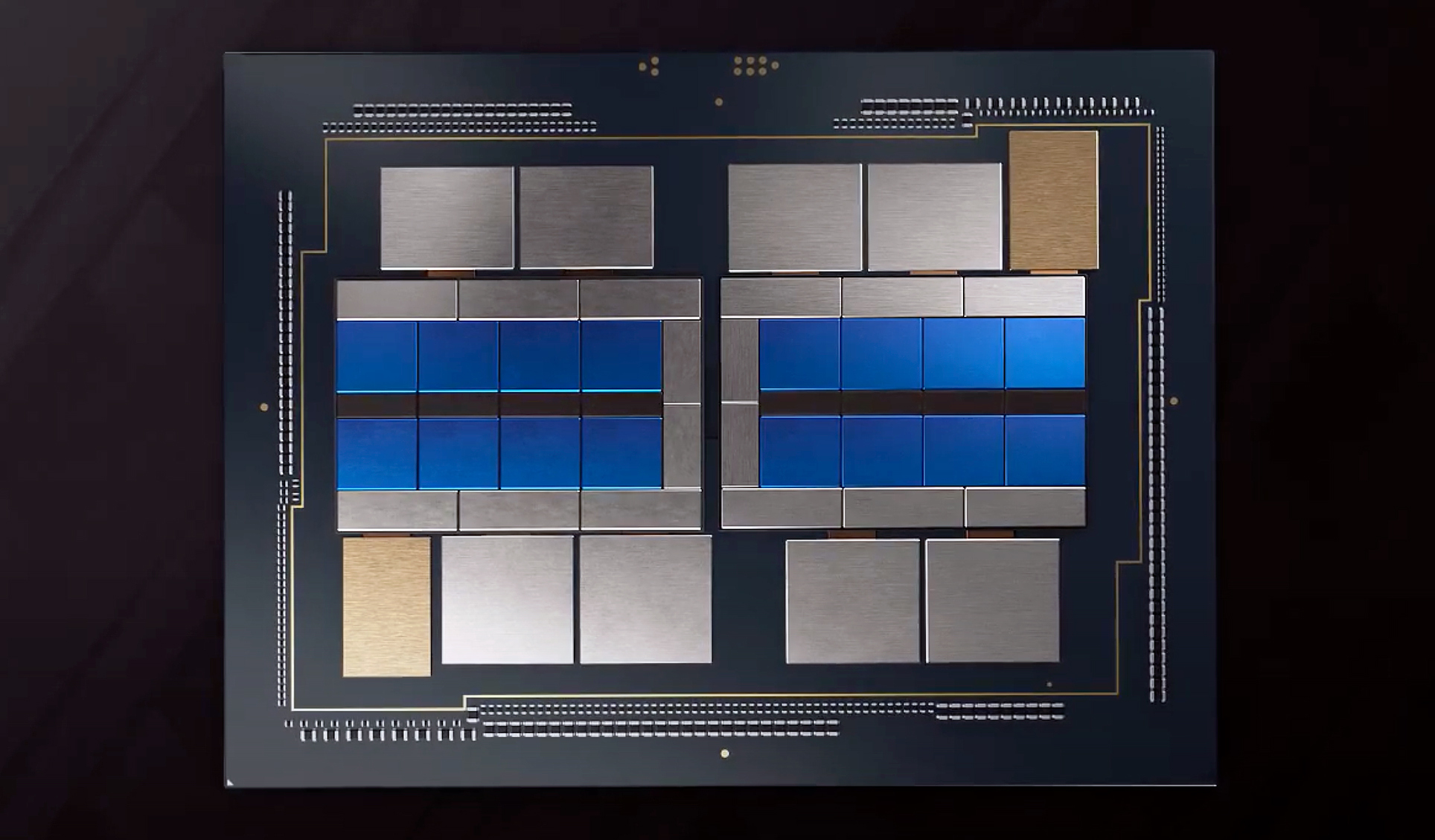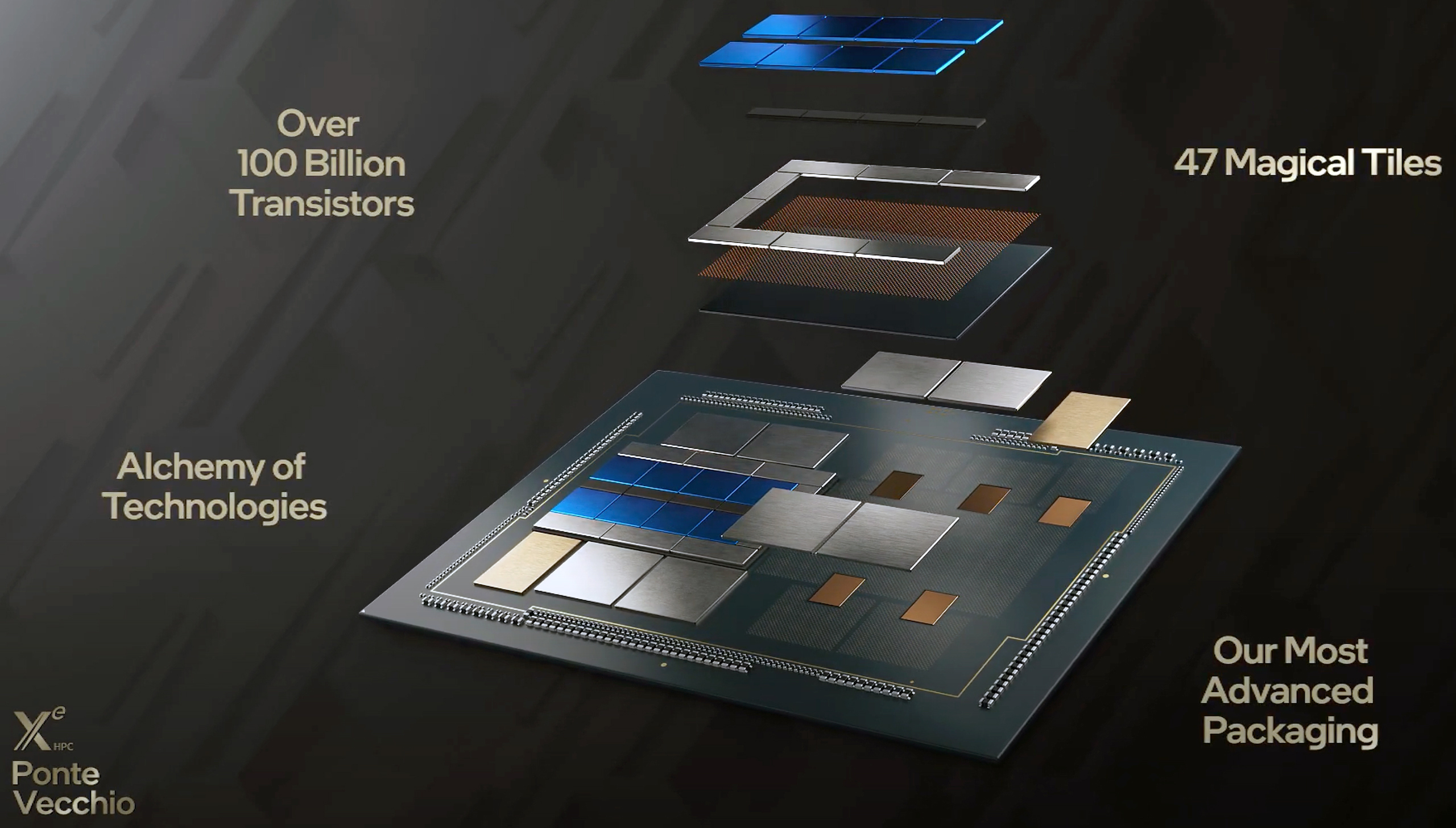Raja Koduri Teases Ponte Vecchio Again as GPU Scores Design Win
German supercomputer to use Intel's Ponte Vecchio GPU.
Intel's graphics guru Raja Koduri on Wednesday once again teased his Twitter followers with an animated image of how the company's Ponte Vecchio compute GPU will be made. He posted the teaser just a day after it was revealed that the Leibniz Supercomputing Centre will use Intel's upcoming Sapphire Rapids CPUs as well as Ponte Vecchio compute GPUs based on the Xe-HPC architecture starting in 2022.
Some Ponte Vecchio Eye Candy pic.twitter.com/fCG2rZrozIMay 5, 2021
Intel's Ponte Vecchio will be one of the industry's most complex chips ever made when it starts shipping in 2022. The compute GPU packs over 100 billion of transistors over 47 different tiles and promises to offer PetaFLOPS class AI performance. Building a GPU of such complexity is an extreme challenge, so it is understandable that Koduri and other Intel engineers are extremely proud.
Hardwareluxx reports that that the Leibniz Supercomputing Centre in Munich, Germany, will adopt Intel's 4th Generation Xeon Scalable 'Sapphire Rapids' CPUs and Ponte Vecchio compute GPUs for its phase two SuperMUC-NG supercomputer due to be delivered in 2022. The system is also expected to use 1PB of Distributed Asynchronous Object Storage (DAOS based on Optane DC SSDs and Optane DC Persistent Memory.
There is no word about performance expected from the new system, but the phase one SuperMUC-NG uses 12,960 Intel Xeon Platinum 8174 processors with 24 cores each. The system offers Linpack (Rmax) performance of 19,476.6 TFLOPS and Linpack Theoretical Peak (Rpeak) performance of 26,873.9 TFLOPS. At present, the supercomputer does not use any GPU accelerators for compute, but engineers from the Leibniz Supercomputing Centre reportedly use some Nvidia Tesla boards for testing their programs.
Without a doubt, the Ponte Vecchio GPU looks very promising, but so far it has officially won only one design with Argonne National Laboratory's Aurora supercomputer. The system is going to be one of the industry's first supercomputers to feature over 1 ExaFLOPS FP64 performance and is going to be used to solve some of the world's most complex compute challenges.
Get Tom's Hardware's best news and in-depth reviews, straight to your inbox.

Anton Shilov is a contributing writer at Tom’s Hardware. Over the past couple of decades, he has covered everything from CPUs and GPUs to supercomputers and from modern process technologies and latest fab tools to high-tech industry trends.
-
hotaru.hino I think Intel really needs to fire their marketing team if they really thought using terms like "magical" and "alchemy" in press releases was a good idea.Reply -
InvalidError Curious to see how well these things will perform. The more complexity there is, the more difficult getting everything to flawlessly work together as intended gets. Then again, this is HPC stuff and people in that field are used to making stuff scale up well beyond expectations even on hardware not designed to do so.Reply -
hotaru251 again..no company that isnt a joke should use the term "magic" to advertise their technology...Reply -
gg83 this machine could really showcase intel's latest tech though. either it is "magical" lol, or its a big buggy piece of junk. I would hope they wouldn't sell a broken super computer.Reply -
watzupken I feel Raja always likes to show teasers of pictures of the product/ chip, and not the performance. Based on what we observed in the pass, it is no usually not a good sign when it comes to performance.Reply -
hannibal I am sure that this is very good at computational tasks as they say.. this is not gaming focused/designed architecture,Reply

